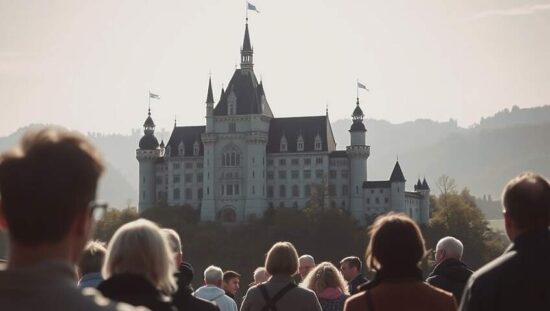The castles of King Ludwig II of Bavaria have been officially inscribed on the UNESCO World Heritage List. The decision was made by the UNESCO World Heritage Committee during its current meeting in Paris.
The four castles – Neuschwanstein, Linderhof, the King’s House at Schachen and Herrenchiemsee – embody the “fantasy worlds” of the Bavarian monarch. Ludwig II commissioned these opulent retreats as personal havens during the second half of the 19th century. This ensemble marks the 55th World Heritage site in Germany.
“The high standard of conservation practices on site can make an important contribution to future exchange within the international World Heritage community for the protection and preservation of World Heritage Sites” stated Serap Güler, State Minister in the Foreign Office.
Maria Böhmer, President of the German UNESCO Commission, added, “They are all architectural masterpieces and bear witness to the artistic imagination, but also the eccentricity of the ‘Fairy-tale King.’ Neuschwanstein, Linderhof, the King’s House at Schachen and Herrenchiemsee originated from Ludwig II’s dream worlds. Today they belong to the heritage of all humankind.
Construction began with Neuschwanstein, renowned for its romantic towers and dramatic mountain backdrop and it has become the quintessential fairy-tale castle. Its interior is heavily influenced by Wagnerian operas – “Tannhäuser, Lohengrin, Tristan and Isolde” and “Parsifal” – with the operatic themes reflected in murals, woodwork, porcelain figures and embroidery. Uniquely, the king connected his living and working rooms via an artificial grotto.
Linderhof similarly blended a desire for seclusion with advanced technology. The Venus Grotto, featuring a color-lit waterfall, a rainbow effect and electric lighting, was remarkably ahead of its time. The lighting was powered by a nearby power plant housing a steam engine.
At the King’s House at Schachen, located at an altitude of over 1,800 meters, Ludwig commissioned a “Turkish Hall” where he held celebratory gatherings. The Moorish Kiosk and the Moroccan House on the Linderhof grounds also demonstrate his enthusiasm for 19th-century Oriental fashion.
Herrenchiemsee represents Ludwig’s idealized vision of Versailles. The ambitious construction ultimately contributed to the king’s financial ruin, leading to his disenfranchisement and premature death at the age of 40. Just weeks after his passing in 1886, the grounds were opened to the public.





